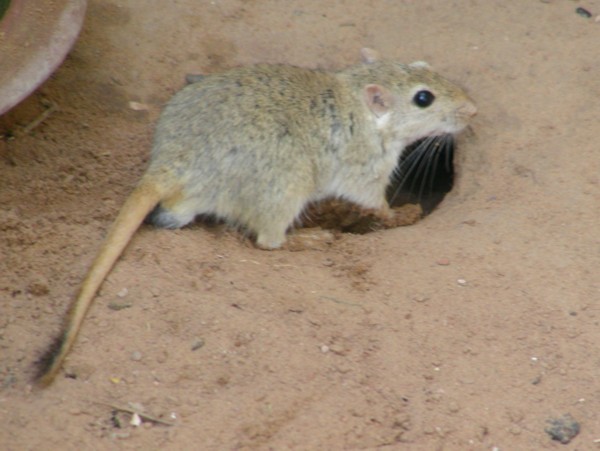Meriones Hurrianae on:
[Wikipedia]
[Google]
[Amazon]
The Indian desert jird or Indian desert gerbil (''Meriones hurrianae'') is a species of
 The Indian desert jird has a grey-brown coat with yellowish-grey belly. It is approximately long and has a tail long. The distinguishing characteristics include short ears, long black claws and orange incisors.
The Indian desert jird has a grey-brown coat with yellowish-grey belly. It is approximately long and has a tail long. The distinguishing characteristics include short ears, long black claws and orange incisors.

Indian hairy-footed gerbil - gerbil-info.com
* {{Taxonbar, from=Q1770166 Meriones (rodent) Mammals of Asia Rodents of India Rodents of Pakistan Jird, Indian Desert Mammals described in 1867 Fauna of the Thar Desert Fauna of Sindh
jird
''Meriones'' is a rodent genus that includes the gerbil most commonly kept as a pet, ''Meriones unguiculatus''. The genus contains most animals referred to as jirds, but members of the genera '' Sekeetamys'', ''Brachiones'', and sometimes '' Pach ...
found mainly in the Thar Desert
The Thar Desert, also known as the Great Indian Desert, is an arid region in the north-western part of the Indian subcontinent, Subcontinent that covers an area of and forms a natural boundary between India and Pakistan. It is the world's Li ...
in India. Jirds are closely related to gerbil
The Mongolian gerbil or Mongolian jird (''Meriones unguiculatus'') is a small rodent belonging to the subfamily Gerbillinae. Their body size is typically , with a tail, and body weight , with adult males larger than females. The animal is use ...
s.
Distribution
The Indian desert jird is found in southeasternIran
Iran, officially the Islamic Republic of Iran, and also called Persia, is a country located in Western Asia. It is bordered by Iraq and Turkey to the west, by Azerbaijan and Armenia to the northwest, by the Caspian Sea and Turkmeni ...
and Pakistan
Pakistan ( ur, ), officially the Islamic Republic of Pakistan ( ur, , label=none), is a country in South Asia. It is the world's List of countries and dependencies by population, fifth-most populous country, with a population of almost 24 ...
to northwestern India
India, officially the Republic of India (Hindi: ), is a country in South Asia. It is the seventh-largest country by area, the second-most populous country, and the most populous democracy in the world. Bounded by the Indian Ocean on the so ...
. In India they can be found in Rajasthan
Rajasthan (; lit. 'Land of Kings') is a state in northern India. It covers or 10.4 per cent of India's total geographical area. It is the largest Indian state by area and the seventh largest by population. It is on India's northwestern si ...
and Gujarat
Gujarat (, ) is a state along the western coast of India. Its coastline of about is the longest in the country, most of which lies on the Kathiawar peninsula. Gujarat is the fifth-largest Indian state by area, covering some ; and the ninth ...
.
Description
Habitat
Jirds inhabit desert and barren areas preferring firm soil. They are not to be found in pure sand dunes or rocky outcrops.
Habits
The jirds are gregarious and their burrows are seen close by. Each jird will have at least two or more entrances to his burrow complex. Often the entrance is in the shade of a tree or near the trunk of bushes. They feed on seeds, roots, nuts, grasses and insects.Difference between 'jirds' and 'gerbils'
Jirds are closely related to gerbils but can be distinguished by the lack of long hind feet and the characteristic erect posture of a gerbil. The tail of a jird is generally shorter than the head and body. It also has much shorter ears. In addition, the Indian desert jird is diurnal, in comparison to the three common gerbil species found in India which are nocturnal.References
External links
Indian hairy-footed gerbil - gerbil-info.com
* {{Taxonbar, from=Q1770166 Meriones (rodent) Mammals of Asia Rodents of India Rodents of Pakistan Jird, Indian Desert Mammals described in 1867 Fauna of the Thar Desert Fauna of Sindh